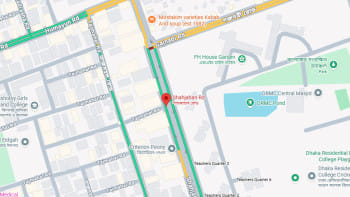How poor are the poor? A dive beyond the line

In Bangladesh today, the narrative on poverty has grown louder yet narrower, focusing almost entirely on the headcount ratio. According to a recent State of the Real Economy study by Power and Participation Research Centre (PPRC), 27.9 percent of people now live below the upper poverty line—a near 10 percentage point rise from the 18.7 percent recorded in the Household Income and Expenditure Survey (HIES) 2022. This is not merely a statistic; it signals a reversal of hard-fought gains.
Yet, this alarming headline misses a deeper truth. Poverty is not just about how many fall below the line, but how far below. The poverty gap index (PGI) addresses the deeper question: how poor are the poor? The PPRC analysis places the PGI at 1.76 percent, nearly double the 0.93 percent recorded in HIES 2022. While the absolute figure may seem modest, its sharp rise is far from reassuring. This suggests that most of those now classified as poor hover just under the threshold rather than being deeply below it. In other words, poverty is now shallower but more widespread, signalling a condition of fragility.
But what about those just above this line? Here lies the crux: nearly 18 percent of the total 8,067 households in our study fall into the "vulnerable non-poor" category, which we have defined as those whose per-capita expenditure lies between the upper poverty line and the median monthly income. This fragile, precarious group is often ignored in mainstream discourse but lives one shock away from poverty. Evidence from the PPRC-BIGD COVID-19 studies offers strong support: nearly 77 percent of this group slipped into poverty and became newly poor during the pandemic. While the latest PPRC survey cannot track such transitions directly, it is plausible that similar vulnerability dynamics persist—many of today's poor were, in fact, yesterday's vulnerable non-poor.
If this is true, poverty reduction cannot simply be about lifting those already below the line, but also about preventing those teetering at the edge from falling in. Policies overlooking this "fragile middle" will be reactive rather than pre-emptive, allowing reversals to outpace progress.
The vulnerabilities that were found extend well beyond income. Around 15.5 percent of school-aged children in the sample are not in school. The results show that the most frequently mentioned barrier was marriage (43.7 percent of cases), followed by financial problems (26.6 percent), the need to work (26.2 percent) and lack of interest in education (16.7 percent), highlighting the structural and motivational barriers in place.
More than half of the households, around 51 percent, report at least one chronically ill household member—a burden that translates into recurring health-related costs and heightened fragility. Debt compounds the stress on households: the bottom 40 percent of households owe at least twice as much as they have in savings, with debts growing by a net seven percent over the previous six months. Food insecurity is another fault line, with 12 percent of households skipping at least one meal in the past week, while nearly nine percent of the poorest decile endured an entire day without food in the past month. Basic development goals also remain stalled, with over a third of households still reliant on non-sanitary latrines.
In addition, among the 15 percent of female-headed households, around 23.8 percent are in the poorest decile. Imagine the everyday negotiations of such a family, choosing between food and medicines, whether to pull a child from school to save on costs or put them to work to support rising burdens. This is the fragile middle point, where households are not officially considered poor today but would be pushed into poverty over the years by illness or indebtedness.
Adopting a "people's lens in economic planning," as the study recommends, means not just seeing poverty as a statistic to be reduced. It means reversing poverty sustainably, accounting for the multidimensionality of vulnerabilities experienced by the fragile middle. It means safety nets that account for current realities. In this particular context, the PPRC recommends a social safety net for households burdened with chronic illness expenses, in line with its findings. It also means nurturing resilience so that the succession of crises our country has witnessed over the past five years—ranging from the pandemic to global inflationary pressures and national political change—does not undo decades of progress. Special emphasis should be placed on those households that are women-headed and youth-heavy, both disproportionately at risk and central to future transformation.
To sum up, it may feel reassuring that poverty depth remains "low." But in Bangladesh today, that is not a comfort; it is a warning. While the poor are not deeply poor, the vulnerable non-poor, nearly one-fifth of households, stand on the tipping point. To truly reverse poverty requires seeing, valuing and safeguarding the fragile middle, while tackling the broader vulnerabilities that erode resilience. Ignoring them is not just policy oversight; it is a risk we can no longer afford.
Namira Shameem is senior research associate at Power and Participation Research Centre (PPRC). She can be reached at [email protected].
Views expressed in this article are the author's own.
Follow The Daily Star Opinion on Facebook for the latest opinions, commentaries and analyses by experts and professionals. To contribute your article or letter to The Daily Star Opinion, see our guidelines for submission.

 For all latest news, follow The Daily Star's Google News channel.
For all latest news, follow The Daily Star's Google News channel. 










Comments